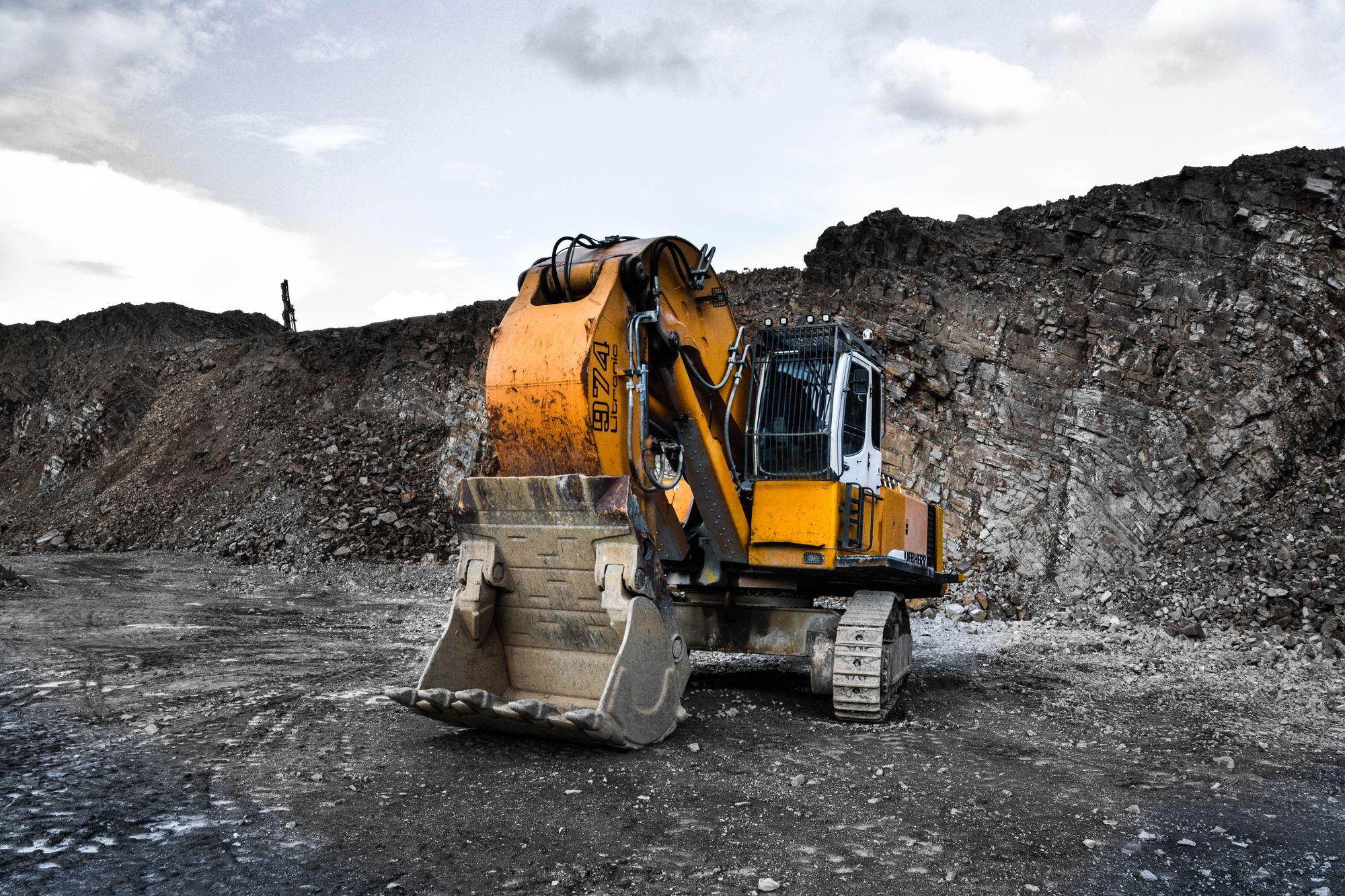What is the aggregate industry
From the concrete on your side walk to calcium filler in our food and toothpaste the aggregate industry played a part. The aggregate industry is responsible for the production of crushed rock, sand and gravel. This material is used in almost every aspect of modern life.

Excavator Truck
How do we extract aggregate?
Drilling and Blasting
Getting aggregate out of the ground requires a lot of work. Breaking apart limestone so that it can be processed and turned into aggregate often requires blasting. Blasting is the process of using explosives to break apart stone and earth so it can be processed with our heavy equipment. The general process is
-
Drilling the holes for the explosives
-
Filling the holes with explosives
-
Blasting the rock.
Loading, Excavating
Once the earth is blasted we can now use our heavy equipment to process the material. We use excavators to load the haul trucks with the raw material.
Crushing & Secondary Breaking
The haul trucks take the raw earth to the crushing plants. Crushing plants are tools that break apart larger rocks to smaller rocks. There are many types of crushing plants. We discuss crushing plants in detail here. The material then travels on conveyor belts to various screening stations.
Screening
Screens are a way of sorting the aggregate. Aggregate comes in many different "products" which means different diameter aggregate. Screens shake with a motor and have a grade the aggregate goes on top of. Only aggregate smaller than the grade falls and is taken to a stockpile.
This is a great example of how a screen works.
Material Handling
Conveyors are how the aggregate moves throughout the plant. These conveyors can be very long up to a mile or more in length. Conveyors can have scales in them to measure the production. Often there will be a scale at the primary plant. Example belt scale from Siemens

Quarry
Jobs in the Aggregate Industry
Heavy Equipment Operator
Heavy equipment operators in the aggregate industry are responsible for operating some of the largest equipment on earth. Equipment operators need to be good with their hand eye coordination and excellent at operating equipment.
Salary range: $33,500-$47,500 per year

Aggregate Haul Truck

Excavator
Environmental Health and Safety Officers
Mine Safety is critical to the aggregate industry. The industry goes to great lengths to keep everyone safe. The primary governing body is MSHA Mine Safety and Health Administration (MSHA).
EHS officers work with operators on safety training, ensure proper personal protective equipment is provided and many other environmental, health and safety tasks. Their role is critical.
Plant Management
Plant Management is responsible for the operation of an aggregate quarry. Often plant management has worked in many areas of the mine. They are like the Capitan of the team. They help the team to safely produce great quality aggregate.
Mechanic
In the aggregate industry machines and equipment will break. Often equipment is exposed to some of the harshest conditions, rock abrasions, extreme dust are just a few. Mechanics work to keep the fleet of equipment in good working condition and to ensure that equipment is safe.
Mechanics need to be very good with their hands and have critical thinking skills. Often it takes solid troubleshooting to solve issues with this often large equipment.
Welder
Welding is very common in the aggregate industry. Every piece of metal where stone comes into contact will likely need to be replaced yearly.
Aggregate plants are huge steel structures that move hundreds of tons of aggregate per year. Keeping the many miles of steel in good condition take welding.

Aggregate Plant Welder
